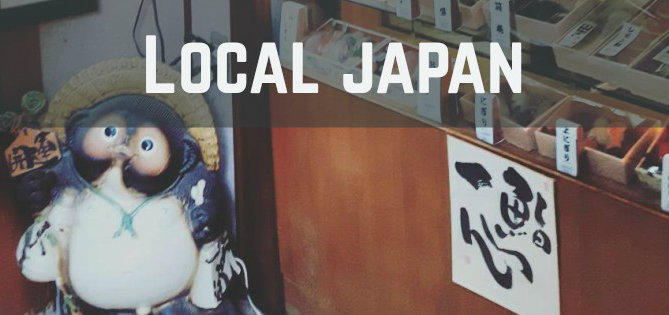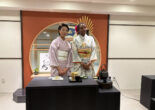
Local Japan: Holy mountains, foxes, rivers and old-fashioned shopping streets: Living in Kyoto’s outside part of Fushimi
That is what made me be very surprised, since I have only seen pictures and videos of Higashiyama and Gion district, I really did not expect to see huge shopping streets and high buildings. Considering the fact that I have never visited Japan’s capital Tokyo, I am happy to be surrounded by more traditional views here in Kyoto, reminding myself of that my Japanese friends told me about Kyoto’s importance as the country’s historical and cultural pride.
Anyone arriving here you will see why most of the Japanese people think like this. Since my love for Japanese history, old traditions & customs, temples & shrines and traditional houses, the Machiya, was stronger than my interest for the pulsating modern city of Tokyo I chose to come here, which was the best decision I could make.Before moving to Kyoto, I was looking for Share Houses online, where I found the „Share House Kitsune“ in Kyoto’s southern part of Fushimi-ku near the famous Shrine of Fushimi Inari Taisha. I was excited about living with other foreigners and Japanese instead of living alone at first. Being fascinated by the fact that the Share house is located near Fushimi Inari Taisha and a small river, I made a call and was lucky to hear that there is a room available. The Share house is run by a lovely Japanese-Swedish couple and the owner is even having her own Cat Café near Fushimi Inari Taisha Shrine.My home is located five minutes by walk from the Keihan-Line station Sumizome, which is super convenient because there are trains coming every 10 minutes and leading towards Osaka in one way or Kyoto Center in the opposite way. That means that I am only 40 minutes away from Osaka by train and 15 minutes away from Kyoto’s Sanjo station and Gion district! Whenever someone arrives at Fushimi-ku, there is not even a hint of huge tourism as someone can see it in Kyoto’s inner parts as Gion or Kiyomizu-dera Temple. Fushimi-ku is a place where mostly only Japanese people live. Surprisingly you can find a lot of churches, due to the fact that Fushimi-ku is one of the places being influenced by christian belief since many hundreds of years ago. My home though is surrounded by a small temple and a beautiful shrine called Fujinomori-jinja. It is very ancient, offering a beautiful main hall, fascinating statues and many festivals, including one with a horse show! Especially at night the shrine becomes a magical place, being filled by the lantern’s light.My house is a traditional Japanese house and really different from where I lived before in my hometown in Germany. First, my slide-door is made by Japanese paper, I am sleeping on a Futon bed, there is no central heating system and the floor is filled with Tatami mats. As a huge fan of Japanese traditional everyday life culture and since it is my first time, I fell more than blessed having the opportunity to live in that way. Since there is no central heating system and since Japanese traditional houses tend to have a lack of isolating walls, winters get super cold and summers get super hot. That is why I am depending on my Kotatsu heating-table and the air conditioner in the burning summer heat. Depending on your personal preferences and body condition this can be very tough and hard to get used to. For me though it was just part of the adventure of living in a traditional house in Kyoto!
The city surrounding my home has a super nostalgic atmosphere and offers a mixture of modern supermarkets, convenient stores and traditional sweets shops, tea stores, etc. Next to my house there is a traditional Japanese-style rice and noodle store! That is why it is extremely easy to find something to eat and drink at any time!
Next to a variety of restaurants, Ramen-bars and Yakitori-pubs there is a huge old-fashioned shopping street near Fushimi-Momoyama Station which is called Otesuji, offering tons of shops. One of my favourite is a traditional tea-store and one specializing in cheap but delicious Kara-age (fried chicken) in many flavours! If you walk through the shopping street you will arrive at the Keihan-line station called Chushojima, where you can find a small river running through the town. In spring and summer there are boats being offered so visitors can enjoy a ride on the river by themselves.
Located near the river is the old part of Chushojima, famous for Japan’s national heroe: Sakamoto Ryoma. The old part and its shopping streets is filled with goods depicting the popular Samurai, from cookies up to socks and writing tools. The most attracting place though is the „Teradaya Inn“, an old-style guest house (Ryokan) where Sakamoto Ryoma is said to have spent some nights. That is why visitors can find a statue of Sakamoto Ryoma in the guest houses garden.
What even many Japanese people do not know is the fact, that Fushimi-ku is one of the oldest and most popular places for brewing Japanese rice wine (Sake). Some people say it is because Fushimi-ku has the most pure and clean water running under it. For everyone  being interested in Sake it is a must-do to see the famous brewing house „Gekkeikan“ and its museum in Chushojima, take part of a Sake-tasting and to visit the old-style shop and café offering a variety of delicious treats being made from Sake. Did you ever try a Sake-flavoured curry or crackers flavoured with Miso-paste and sweet Sake-cream? I can highly recommend it!
being interested in Sake it is a must-do to see the famous brewing house „Gekkeikan“ and its museum in Chushojima, take part of a Sake-tasting and to visit the old-style shop and café offering a variety of delicious treats being made from Sake. Did you ever try a Sake-flavoured curry or crackers flavoured with Miso-paste and sweet Sake-cream? I can highly recommend it!
Next to culinary adventures someone can enjoy the nature and spiritual side of Fushimi-ku, both to find at mount Daigo and Daigo-ji temple. Located 20 minutes from my home, mount Daigo can be climbed up in around one hour, offering countless small temples, holy stones and an incredible view on top of it. If you are lucky enough to have a bright and sunny day, you might see some part of the city of Osaka from top of the mountain!
All in all living in Fushimi-ku is a bless for me, having traditional sights, relatively unknown hot-spots and both Kyoto and Osaka nearby!
Related Articles
Warning: Undefined array key "sfsi_threadsIcon_order" in /home/veremosglobal/tokyoroomfinder.com/public_html/blog/wp-content/plugins/ultimate-social-media-icons/libs/controllers/sfsi_frontpopUp.php on line 165
Warning: Undefined array key "sfsi_blueskyIcon_order" in /home/veremosglobal/tokyoroomfinder.com/public_html/blog/wp-content/plugins/ultimate-social-media-icons/libs/controllers/sfsi_frontpopUp.php on line 170
Warning: Undefined array key "sfsi_bluesky_display" in /home/veremosglobal/tokyoroomfinder.com/public_html/blog/wp-content/plugins/ultimate-social-media-icons/libs/controllers/sfsi_frontpopUp.php on line 266



